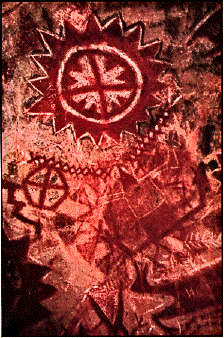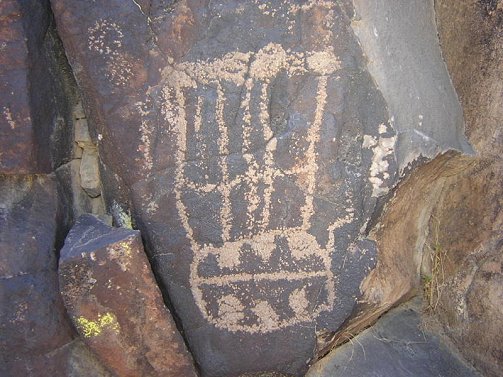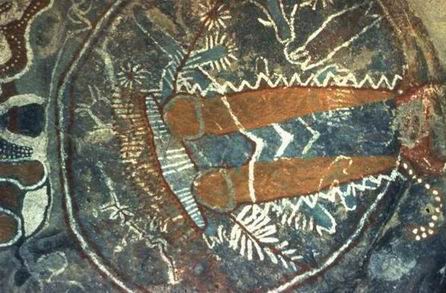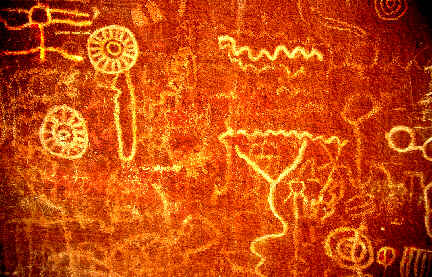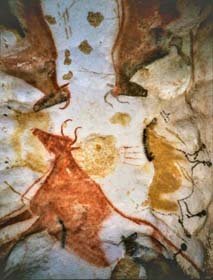
Art, Shamanism, and Entoptic Images
David Lewis-Williams and associated archeologists have rehabilitated the interpretation of Paleolithic cave art as a form of magic by focusing on the geometric images that appear in great numbers on the cave walls, instead of the realistic depiction of animals that was Breuil's focus in his hunting magic theory. Lewis-Williams argues that the geometric images are spatial variations on a set of "form-constants" that the neurologist, Heinrich Kluver, identified in the visionary experiences of experimental subjects under the influence of the hallucinogenic drug, mescaline, An expert on the San Bushman people of South Africa, Lewis-Williams argued, in a series of well-documented papers, that the transfigured form constants are present on cave walls painted by Bushman shamans. Shamans are ritual experts, often found in hunting communities, adept at entering trance states in which they visit the world of the spirits. They take these excusions to retrieve the lost souls of the desperately ill, to influence the weather, to oppose the forces of witchcraft (in the sense of malicious, harmful magic), and to negotiate with the animal spirits over game. According to Lewis-Williams, the Bushman cave paintings, which were made well into the 19th century, are records of the visionary experiences of the shamans. In a more controversial series of papers and books, Lewis-Williams has argued that the form-constants that Kluver identified also underlie the geometric images of Paleolithic European cave art. The bridge that connects the two is the common neurological makeup that the Bushman, and all currently living human beings, share with the Paleolithic hunters. When the human brain is destabilized in certain ways - through sensory deprivation, rhythmic chanting or drumming, flickering lights, certain forms of dance, as well as the ingestion of hallucinogenic drugs - it reacts by generating so-called "entoptic images," which are merely expressions of Kluver's form-constants. "Entoptic" means "within the visual system," referring to images generated anywhere from the retina to the highest layers of the visual cortex. Within the cultural framework of the San Bushman and other "primitive" hunting communities, the entoptic images are interpreted as journeys to the spirit world. From these considerations, Lewis-Williams draws the conclusion that the paintings and engravings of the Old Stone Age European caves were the result of shamanic ceremonies conducted in dark caverns deep within the earth. As Breuil had suspected, their purpose was magical. What he did not know was that the magic occurred in the context of shamanic trance.
Entoptic Images in European Cave Art

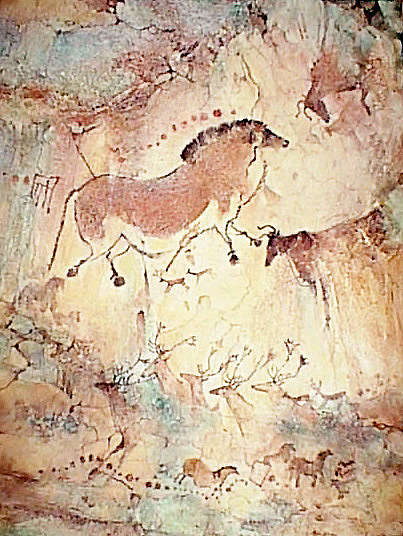
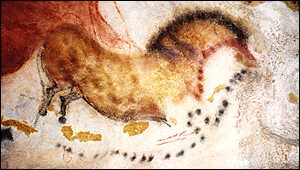
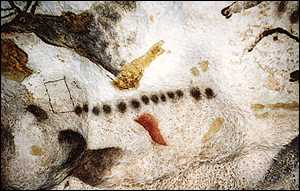
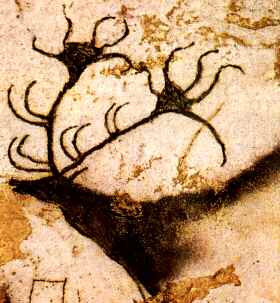
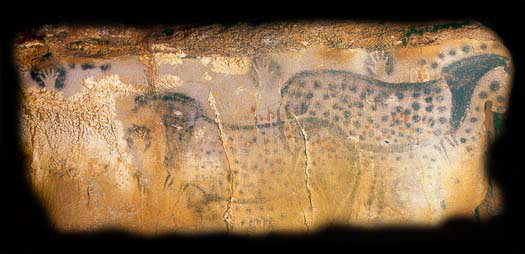
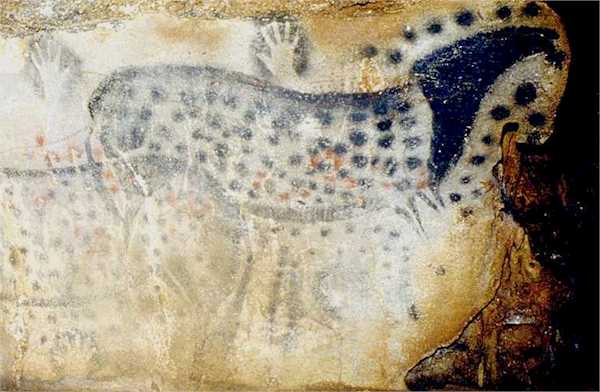
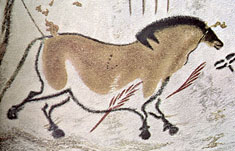
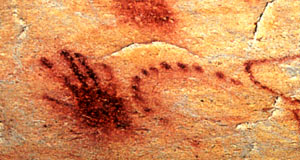
Entoptic Images in San Bushman Cave Art
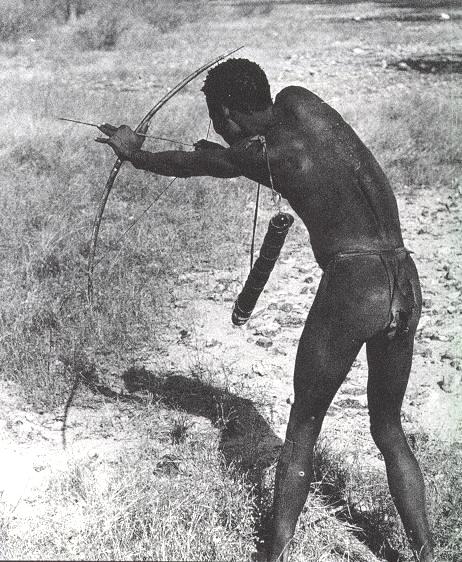
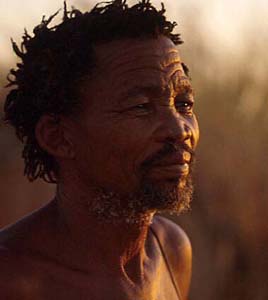
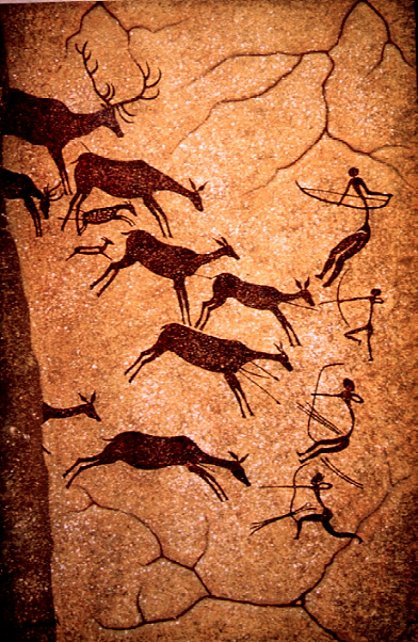
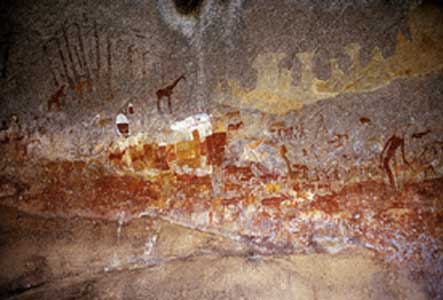
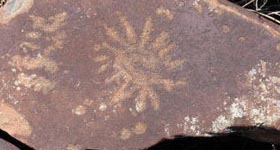
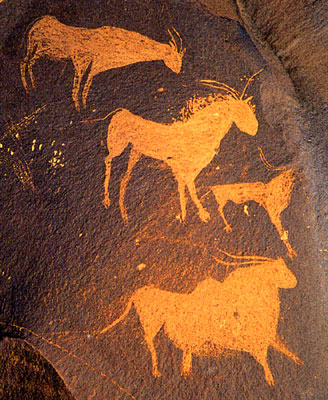
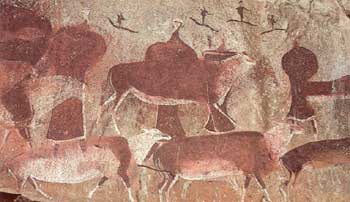
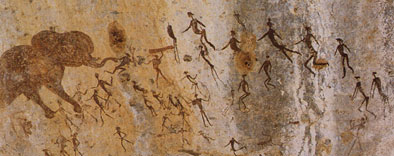
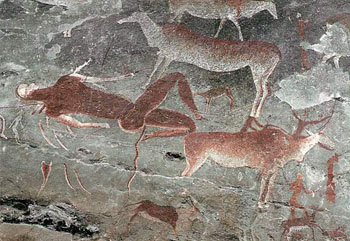
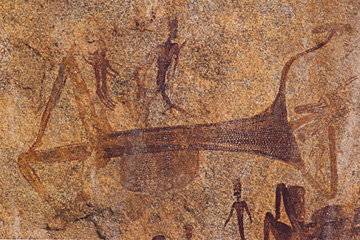
Painting of a shaman reclining in a state of trance
Entoptic Images in Amerindian Cave Art
In the American southwest, entoptic imagery is found on cave walls painted by Native Americans before the arrival of Europeans.
